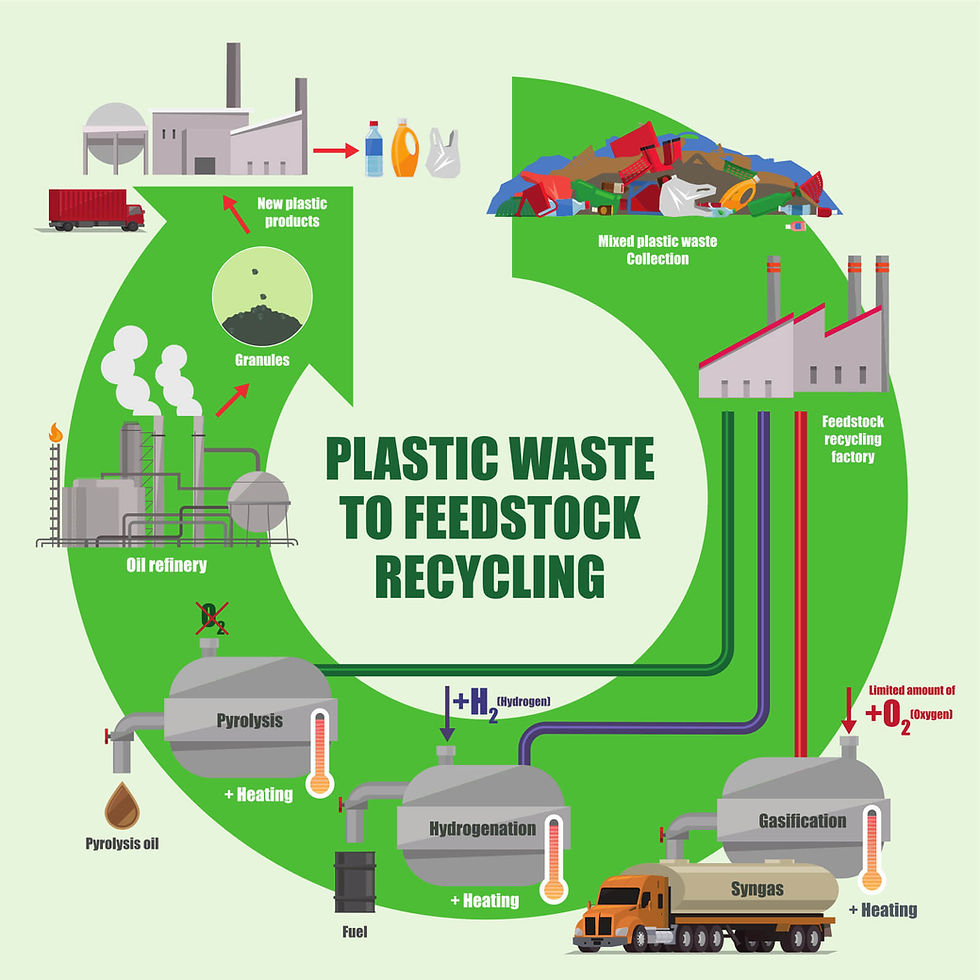MaxFlux™: The Next Generation in Plastic Pyrolysis Oil Upgrading
- cemnar0
- Jul 17
- 2 min read

Introduction
Plastics are woven into the fabric of modern life, but plastic waste is one of the planet’s most pressing environmental challenges. As governments, consumers, and industries push for true circularity, advanced solutions for transforming waste plastics into valuable resources are more critical than ever.
Sulzer’s MaxFlux hydrotreating technology stands at the forefront of this movement, enabling the efficient and economical upgrading of plastic pyrolysis oils (PPO) into high-purity naphtha and other valuable streams. With its unique reactor design and advanced process control, MaxFlux is powering the next wave of sustainable plastics recycling for a more circular economy.
Why MaxFlux Stands Apart
True Circularity Achieved: MaxFlux enables plastics-to-plastics recycling by turning low-value, contaminated plastic pyrolysis oils into steam cracker-ready naphtha, essential for producing new, virgin-grade polymers.
Superior Impurity Removal: Capable of reducing nitrogen, sulfur, silicon, chlorine, oxygen, and metals to levels below even the most stringent steam cracker specifications.
Capital & Operational Excellence: The reactor’s high liquid flux and innovative mixing eliminate the typical hydrogen gas recycle loop, reducing utilities and complexity for significant capital and operating savings.
Longer Catalyst Life & Higher Yields: Better heat management, less over-cracking, and minimized catalyst coking contribute to reduced maintenance costs and consistent, high-value product output.
Flexible & Robust: Easily integrates guard beds, adsorbents, and pre-hydro units for broad feedstock flexibility ready for new plants, retrofits, or expansions.
How MaxFlux Works
Unlike traditional trickle-bed hydrotreaters, where hydrogen mass transfer limits efficiency and excess quench gas is needed to control temperatures, MaxFlux dissolves hydrogen directly into the liquid phase at the reactor inlet. This creates a stable reaction environment, maximizes contaminant removal, and stabilizes temperature swings protecting both catalysts and plant productivity.
Process steps include:
Pretreatment: PPO is first filtered through adsorbent and guard beds to remove poisons.
Guard Reactors: Upstream reactors stabilize diolefins and remove early contaminants.
MaxFlux Reactor: Hydrogen-enriched liquid passes through one or more catalyst beds, with make-up hydrogen only at essential points.
Separation: Product and off-gases are split; high-quality naphtha is collected, and only a fraction of effluent is recycled no massive gas loops required.
Performance in Action
Typical MaxFlux results for PPO upgrading:
Property | PPO Feed | MaxFlux™ Product | Steam Cracker Spec |
Nitrogen (ppmw) | 400–1,500 | <10 | <100 |
Sulfur (ppmw) | 30–200 | <50 | <500 |
Silicon (ppmw) | 35–50 | <1 | <1 |
Chlorine (ppmw) | 30–150 | <3 | <1 |
Metals (ppmw) | 25–50 | <1 | <1 |
Olefins (wt %) | 45–55 | <2 | <1 |
These levels position MaxFlux-treated products for reliable, high-yield operation in downstream petrochemical crackers, closing the loop on circular plastics.
Environmental and Economic Benefits
Reduces landfill and incineration: Diverts mixed plastic waste from disposal, giving it new value as high-grade feedstock.
Slashes energy use & emissions: Eliminates unnecessary gas recompression, lowers fuel needs, and optimizes plant footprint.
Boosts ROI: Rapid payback through lower utility bills, less catalyst change-out, and high saleable yields.
Conclusion
MaxFlux by Sulzer is more than a hydrotreating solution it's an enabler for a circular plastics economy. From its efficient contaminant removal to its economic and sustainability advantages, MaxFlux is the bridge between today’s plastic waste crisis and tomorrow’s sustainable material supply.
Embrace the future of plastics upgrading with Sulzer MaxFlux.



